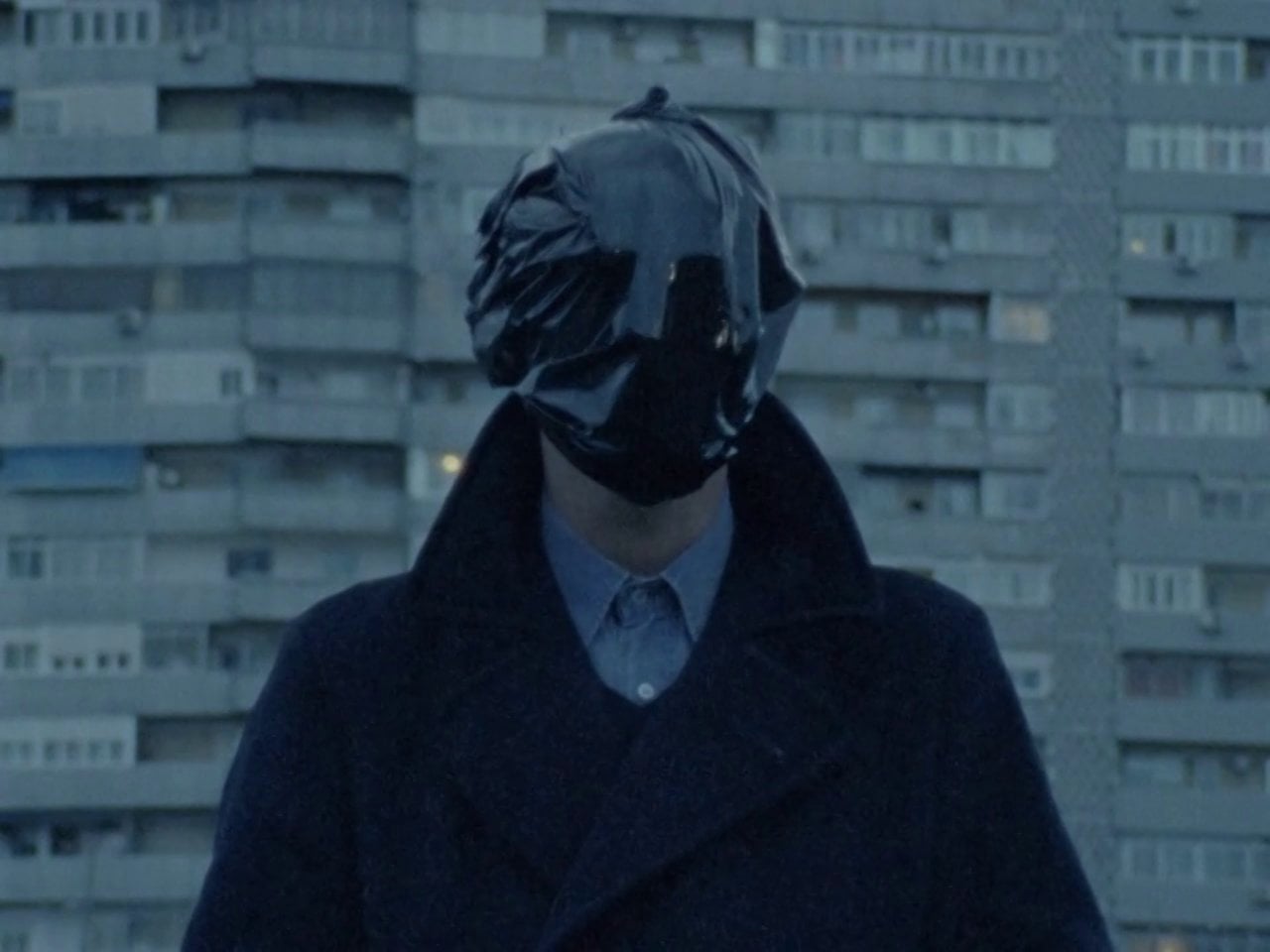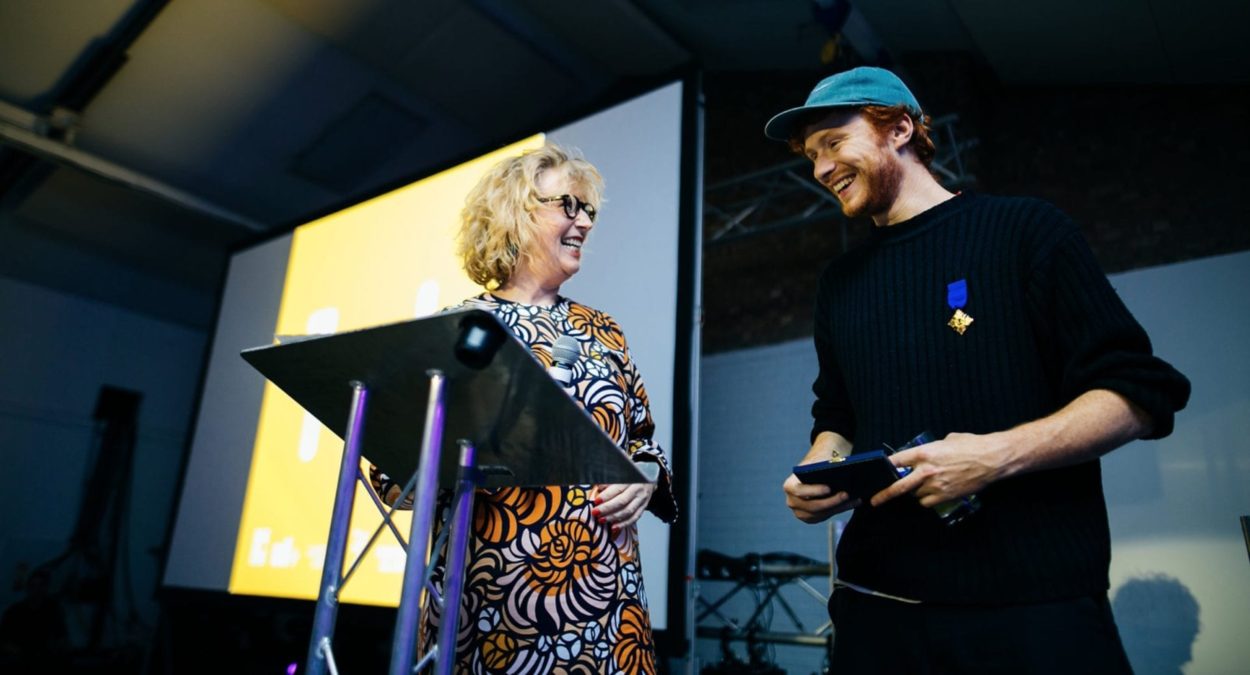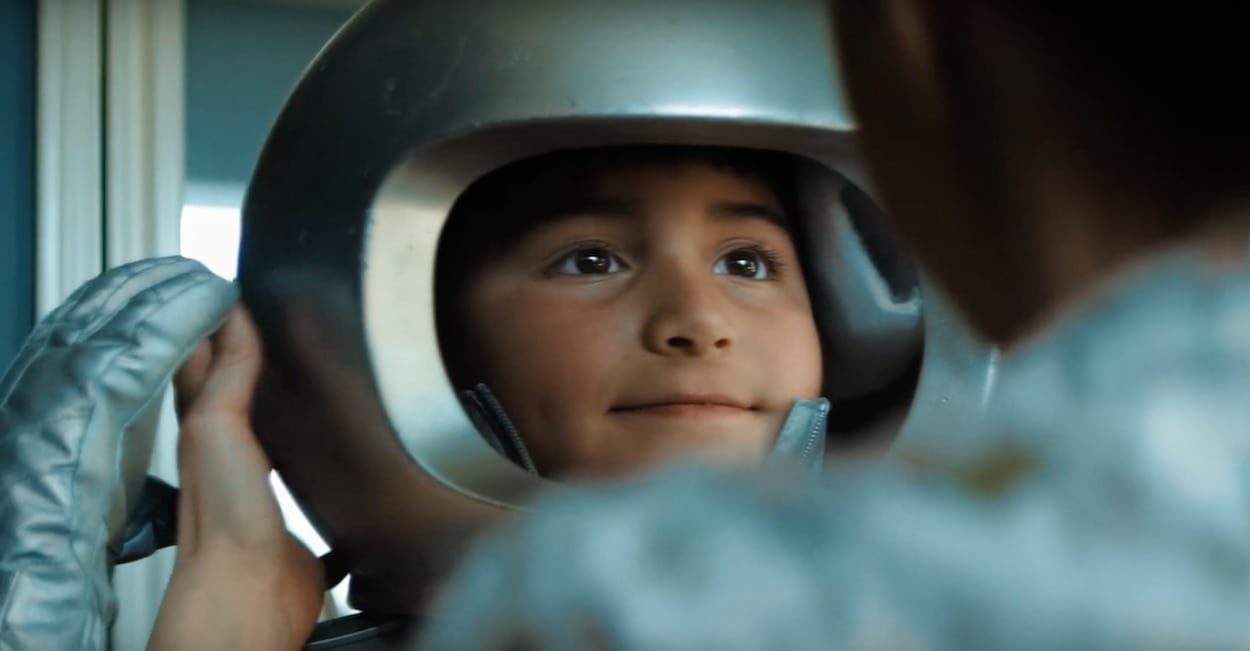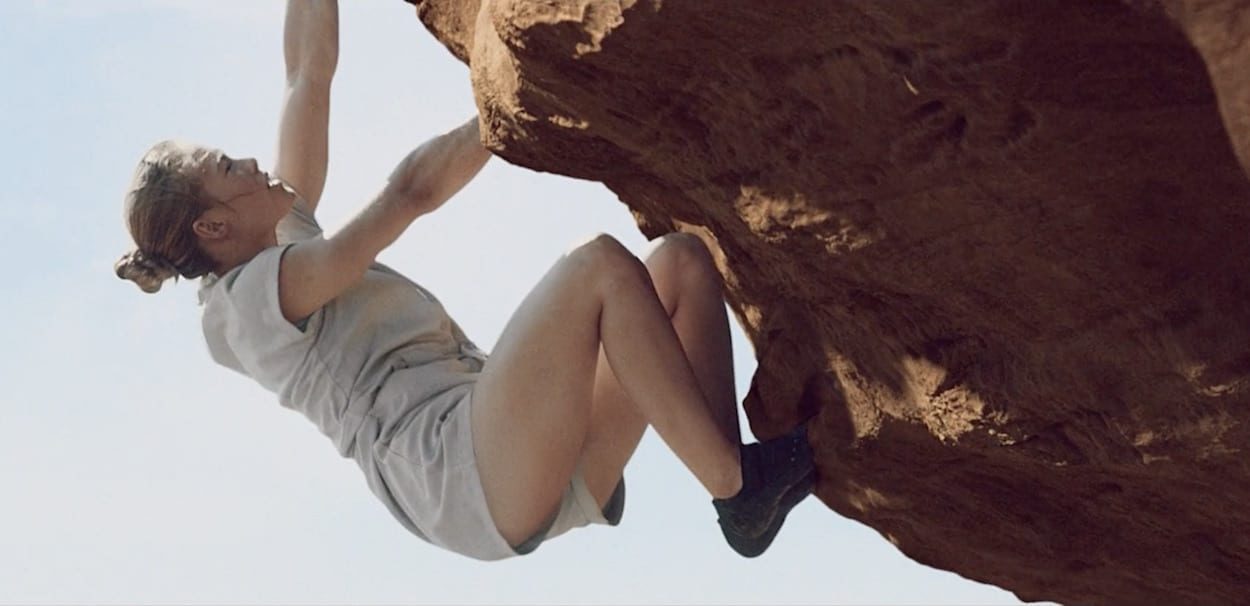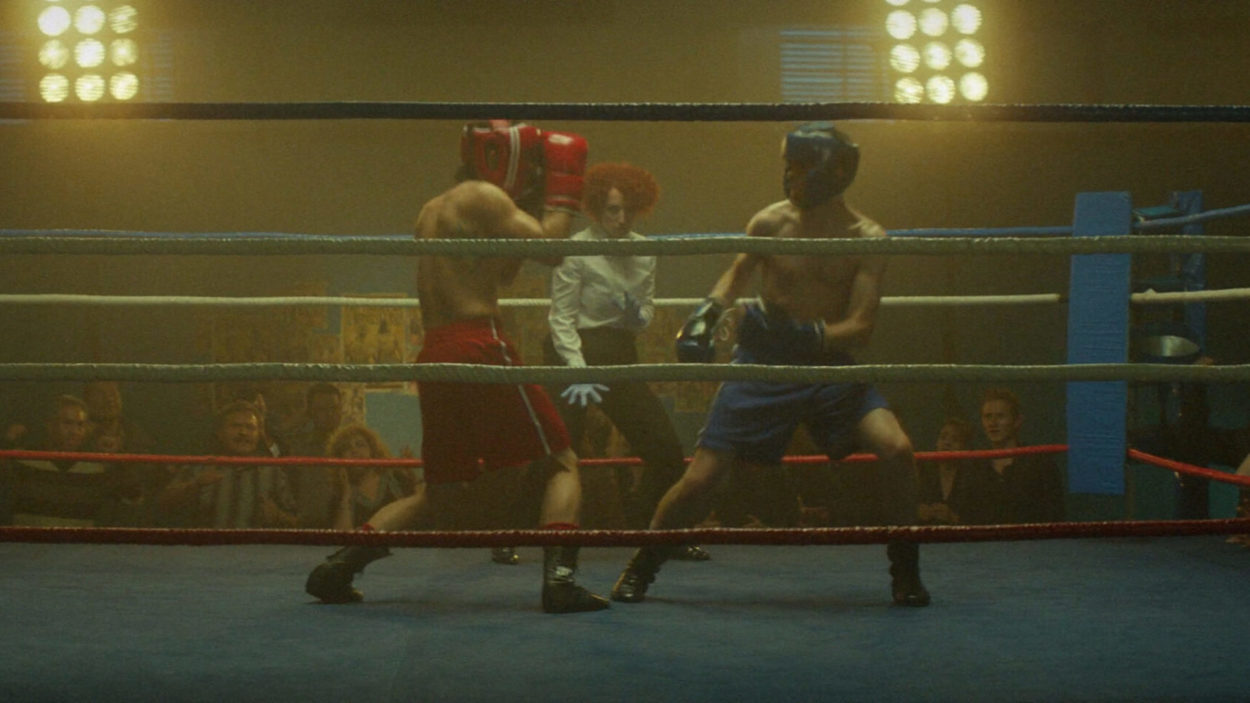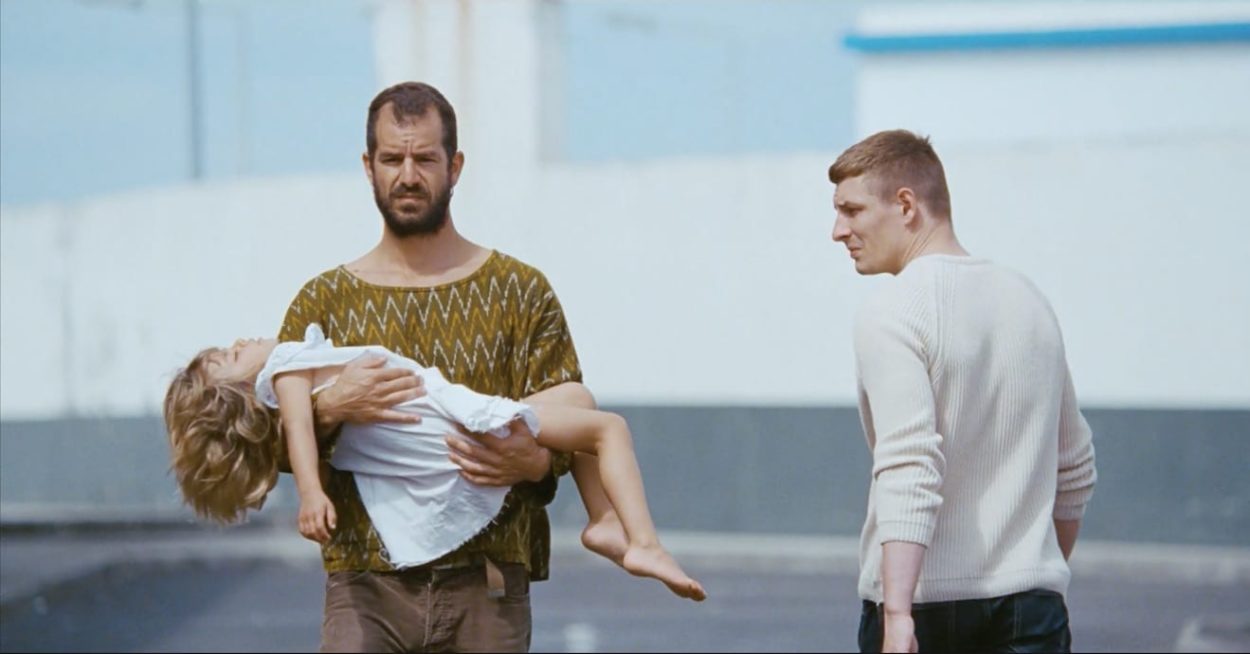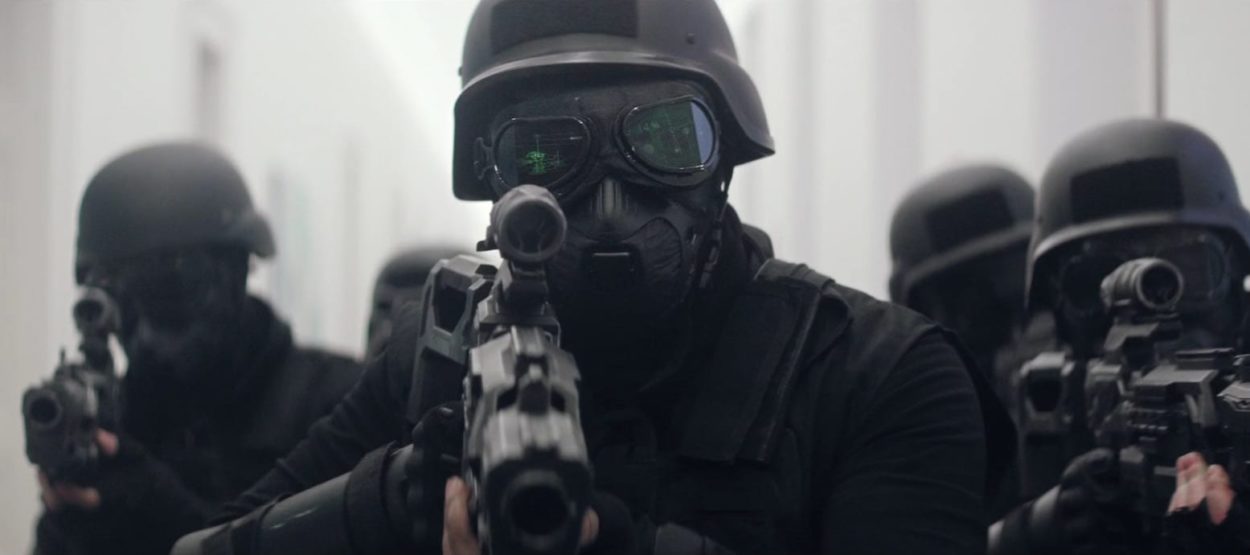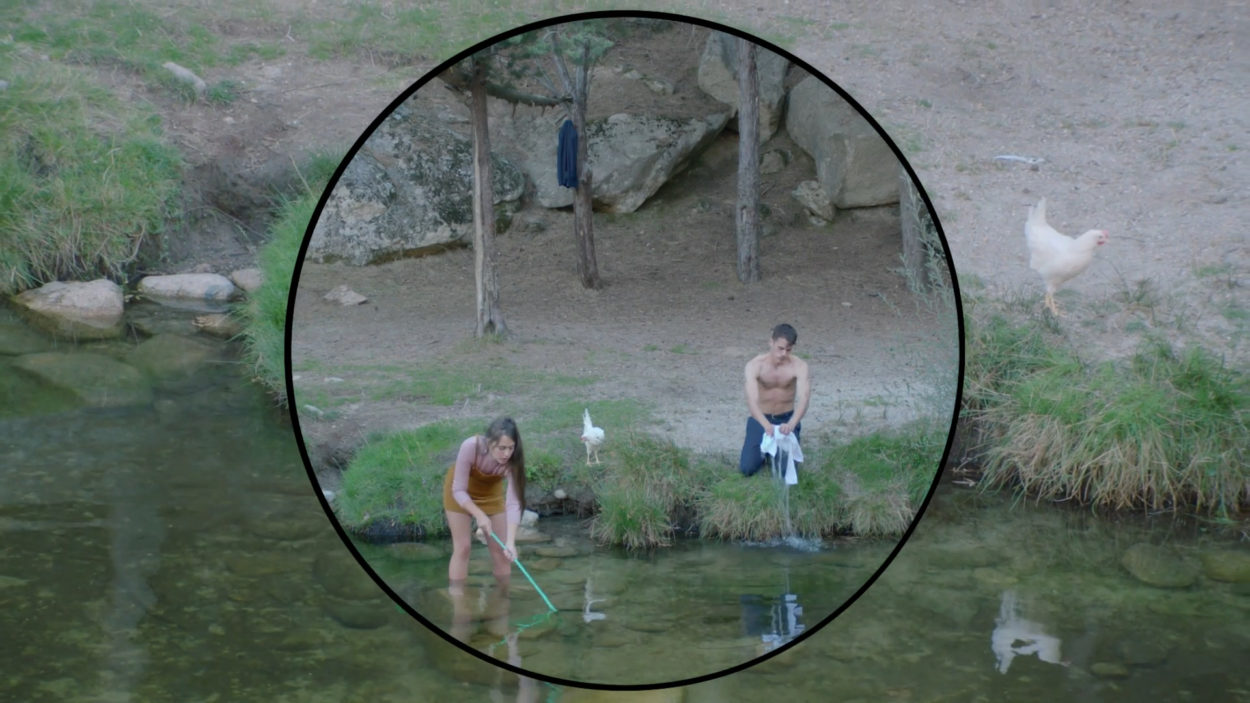You have an astute eye for framing spaces, usually architectural, in your work. Is there something specific in your background and training that gives you your distinctive vision – for instance were you trained as a photographer?
Thanks! Before I started directing my own stuff I studied at ECAM (Cinema school of Madrid) and worked as a DOP. My eye for imagery and framing probably developed from being so focused on the visual element of telling narratives.
Do you research the locations before your develop a narrative? Please tell us about your creative process. Do you storyboard in detail?
It depends on the project and of course the amount of freedom I’m given to develop my work. However, I always try to express my own personality and character even though I’m working to create something the client wants. Since everyone sees things differently, my own vision is the most valuable thing I can give.
I don’t do a classic storyboard, I like to frame and take photos on location, pretty much the same as what appears in the film and then I write a technical script, but once you’re on the set, everything you planned before changes. Making a film is a live and evolving process, so I adapt as I go.
You use the human form in interesting ways to tell your stories – the architect observing the dancer for Squires for instance. Did you evolve the movements with a choreographer and what were you trying to express with the dance?
The process to make this video was really unusual. In the beginning there wasn’t a main concept or a script, and the client wanted to convey so many quite abstract things in one film! The challenge was to make it something more unified. It was really interesting working directly with an architect and the client was a very creative guy. I can’t remember how many meetings we had, there were a lot, we discussed some concepts again and again until we found something that both of us liked.
With the dance we wanted to express that architecture is something which is emotional as well as physical, something that you can interact with and it affects your mood. Because if someone built a really ugly building just in front of your house it would make your life a bit uglier and sadder, and the opposite can happen. I love the South Bank because of all the interesting spaces between the graphic structures and as a place it gives a feeling of such creativity that it made sense to base the dance there.
So, we first rehearsed in the studio, after that the choreographer, the dancer and I went to the locations to compose the dance movements into the urban space. Finally, on the shooting day we changed what didn’t work on camera, so there was some improvisation in this process.
I feel this piece is an equally weighted work between the choreographer Aaron Sillis, the dancer Naomi and me.
Although there isn’t dancing in Territoire’s Blanc you place the characters in poses which create a sense of claustrophobia and impending violence in a very studied theatrical way. Please tell us about the narrative behind this film and how you evolved the character studies.
The idea is about a conflicting and tortuous relationship between a father and son. To that end to emphasise the confrontation between the two characters I used motionless frames and placed them in abstract, isolated spaces in which apparently nothing happens.
I like to use narration in a purely visual way, based in abstract and moody images. The main goal was to build deep suffocating atmospheres using the minimum of elements. In fact in most of the shots you only see a motionless guy in a lonely place looking directly to the camera in a fixed shot. I see it like a psychological horror movie.
Do you feel that your Spanish heritage influences your work?
I’ve never thought about it until my father, after seeing Blanc, told me that it was deeply influenced by the Spanish topics, such as Death, Life and Struggle.
Also in Spain we are always in crisis, apart from a long period after the American discovery (but that was some centuries ago) and after the democratic transition in the eighties and nineties, but nowadays we’ve seen that everything was a fake, an economic bubble and a rotten spiritual era. Goya’s black paintings and José de Ribera’s portraits perfectly paint this Spanish (dark-always in crisis) mood and I’ve been always been obsessed with them. And of course they talk about Death, Life and Struggle. Maybe my father was right. I hope he will not read this, I don’t like to ever acknowledge that he is right…
Did you train as a film-maker or are you self taught?
As I said before I started as a DoP and that was a good training because I learned from working with a lot of directors. I would say that I learned quite a lot of what I shouldn’t do rather than what I should do when directing.
An elevator version of what led you to directing please.
Orson Welles. And I talked to you before about Ribera and Goya…. I know what you are thinking and yes, I love all the classics… I hope that doesn’t sound boring in an elevator!
Briefly, please describe your childhood.
I was born in Valladolid but spent most of my childhood in a small village in the mountains of León. During those years, I wistfully remember the weeks I spent isolated by the snow at the family house, but above all, I remember the smell of fresh handmade cheese I used to make with my grandfather.
For better or for worse, I was neighbors with the teacher at the school, so when classes were cancelled by the weather I had to go straight to his place to take the lessons. At the age of twelve, we went back to the capital and my parents bought a telly, I didn’t have one before! Also I started to go to the cinema and became obsessed with cinema and motion images. I remember I never had much money and several times when I went to the cinema and the film was finished I hid myself in the cinema bathroom and gate-crashed another movie. I actually only stopped doing that one year ago… ha!
LINKS
See more work here

